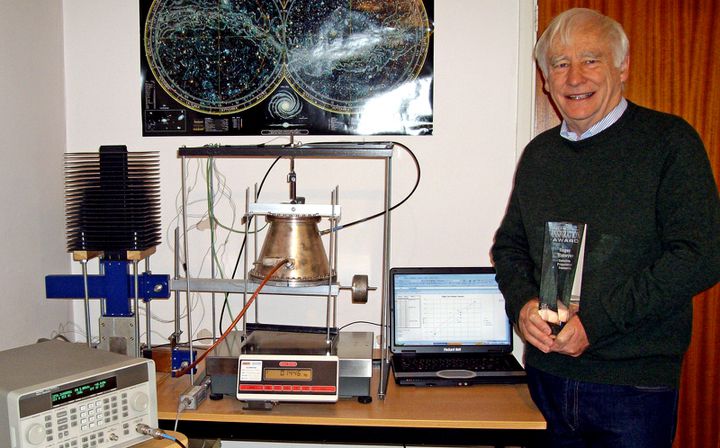
The EmDrive – Electromagnetic Drive – is a new type of electrical device, purported to transform electrical energy into thrust without any sort of propellant. That means it requires no fuel, other than the electricity you pump it with.
It makes a great headline, but this thruster doesn't break Newton's Third Law of Physics – the law of conservation of momentum. The EmDrive purports to transform the momentum of electromagnetic waves into thrust, though you'll need to be a physicist to really understand how it works.
This device has been a subject of heated debate for several years, with some believing in the machine, others claiming it doesn't work because it would break the laws of physics, and still others claiming it works and really does break the laws of physics. But a recent peer-reviewed paper - Measurement of Impulsive Thrust from a Closed Radio-Frequency Cavity in Vacuum - has given everyone a lot to think about.
This study, conducted by a team at the NASA Johnson Space Center, tested the EmDrive in a near vacuum, which had not been done before and was seen as a very important step. They found that the drive did indeed produce thrust, of 1.2 ± 0.1 millinewtons per kilowatt of power. There could be some error in the experimental setup, or some unexpected cause for the result, but this is a crucial milestone for this technology.
If the EmDrive becomes our new thruster of choice, space travel will get a whole lot faster. Like, get-to-Mars-in-10-weeks faster.
The EmDrive Struggles to be Born
The EmDrive gained its fame two years ago at a major propulsion conference. It might've been disregarded entirely, but the concept was presented by NASA Eagleworks, an advanced propulsion research group at the Johnson Space Center. So people paid attention.
An EmDrive was originally tested over a decade ago, around 2001, by a company called Satellite Propulsion Research LTD in the UK. Their research was done under Roger J. Shawyer.
Since then, a few researchers have been working on the technology, and it has even been suggested that this drive could be used to fix the course of the International Space Station as it orbits around Earth.
But the idea hasn't really been taken seriously because it seems impossible, though Roger Shawyer will explain that it's built according to the laws of physics, and actually works because of them. There have also never been tests in a vacuum, where many confounding factors can be ruled out – until now.
The EmDrive Works, but How?
Pretty much everyone now admits that the EmDrive produces thrust, but not everyone agrees about how that's happening. In fact, nobody knows quite how it works.
This a propellent-less thruster, meaning it works without using a propellent. Propellent is what you eject to shove you forward in a rocket – the exhaust gas being shot out at very high speed. There are other propellent-less thrust systems, like solar sails, but nothing this powerful.
The basic idea is a metal drum, known as the “copper bucket,” which is open on one end. Microwaves are shot into the drum, and they bounce back and forth creating pressure on the inside. Since it's open and tapered, the pressure pushes in one direction in particular, making the device move.
 This image, and the image above, credit: ARC
This image, and the image above, credit: ARC
The EmDrive generates a small force - 1.2 ± 0.1 millinewtons per kilowatt - but it's still 100 times stronger than a solar sail. And over long periods of time, even that small pressure can accelerate a spacecraft to an incredible speed. Ships built with a drive like this also save a lot of weight because they don't need to carry fuel like gas – the device runs on electricity alone.
After being optimized as a thruster for space travel, the EmDrive could transform the way we explore space. It could bring us to Mars in only 10 weeks, compared to the 6 months with current rockets. We could go to Alpha Centauri in only 92 years, compared to thousands of years. That's way less time spent in the space bathroom.
Even though this is a peer-reviewed paper, it doesn't mean the EmDrive is good to go for spaceflight. There could be other reasons for the measured thrust, or sources of error that weren't accounted for. But for now, if you're interested in going to Mars or any of the other planets or star systems in a reasonable amount of time, this is something to keep your eye on.
As for our own notorious meddling in the future of space travel, don't forget to keep an eye on the Space Poop Challenge as the winners will be announced on February 16th. Stay tuned!








